https://gds.blog.gov.uk/story-2012/
A GDS Story 2012
This is one part of “A GDS story”. Please read the introduction and the blog post that explains this project.
More of the story: 2010, 2011, 2013, 2014, 2015, 2016, 2017, 2018, 2019, 2020, 2021
January

19 January
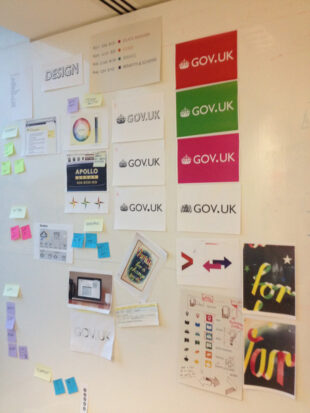
A blog post on designing the GOV.UK beta:
We won't get it right first time round. We'll be putting stakes in the ground. Sketching out ideas we think might work, testing different solutions and setting a course for where we want this thing to head. It's a huge, complicated task.
31 January
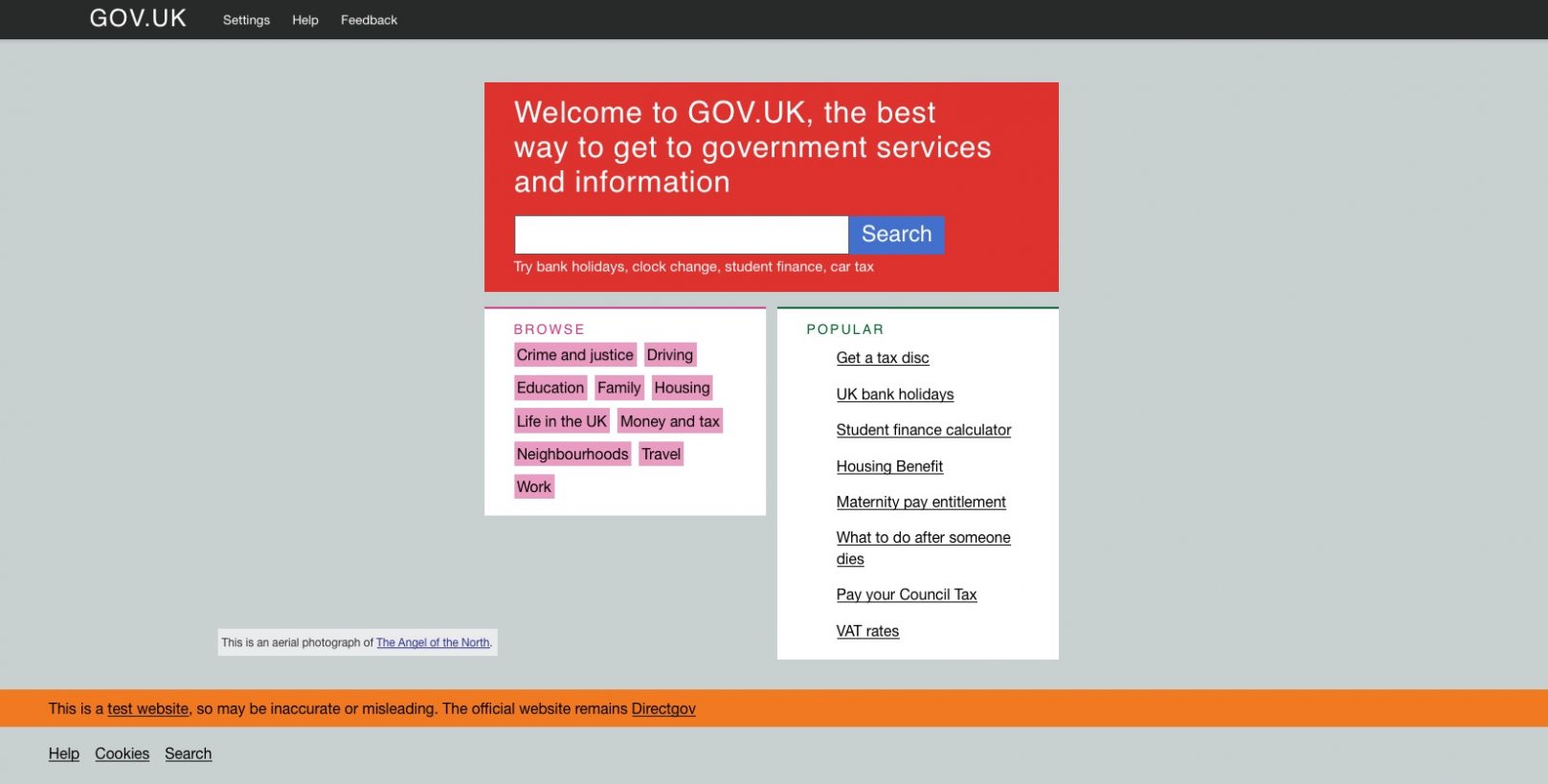

The GOV.UK public beta was launched. It was dubbed "our first big platform".
The team created gov.uk/tour to show people around. The beta was visible at www.gov.uk but remained "unofficial" - it hadn't yet replaced www.direct.gov.uk. Replacing that would be the bulk of the work until October 2012. Users were asked to submit feedback via a Get Satisfaction page.
The engagement team monitored social media and put together some useful analysis of feedback, including a Storyful summary of activity.
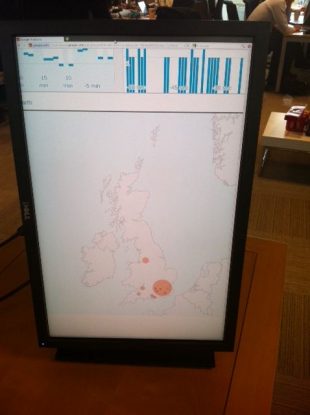
Tom Loosemore and Martha Lane Fox were interviewed on BBC news.
Within a day, the team iterated the beta based on user feedback. Within 2 days, more feedback, more iteration. Things continued in a very similar manner from there.
Around this time, GDS began growing fast. The deadline for replacing Directgov was just months away, and the team needed more pairs of hands quickly.
February
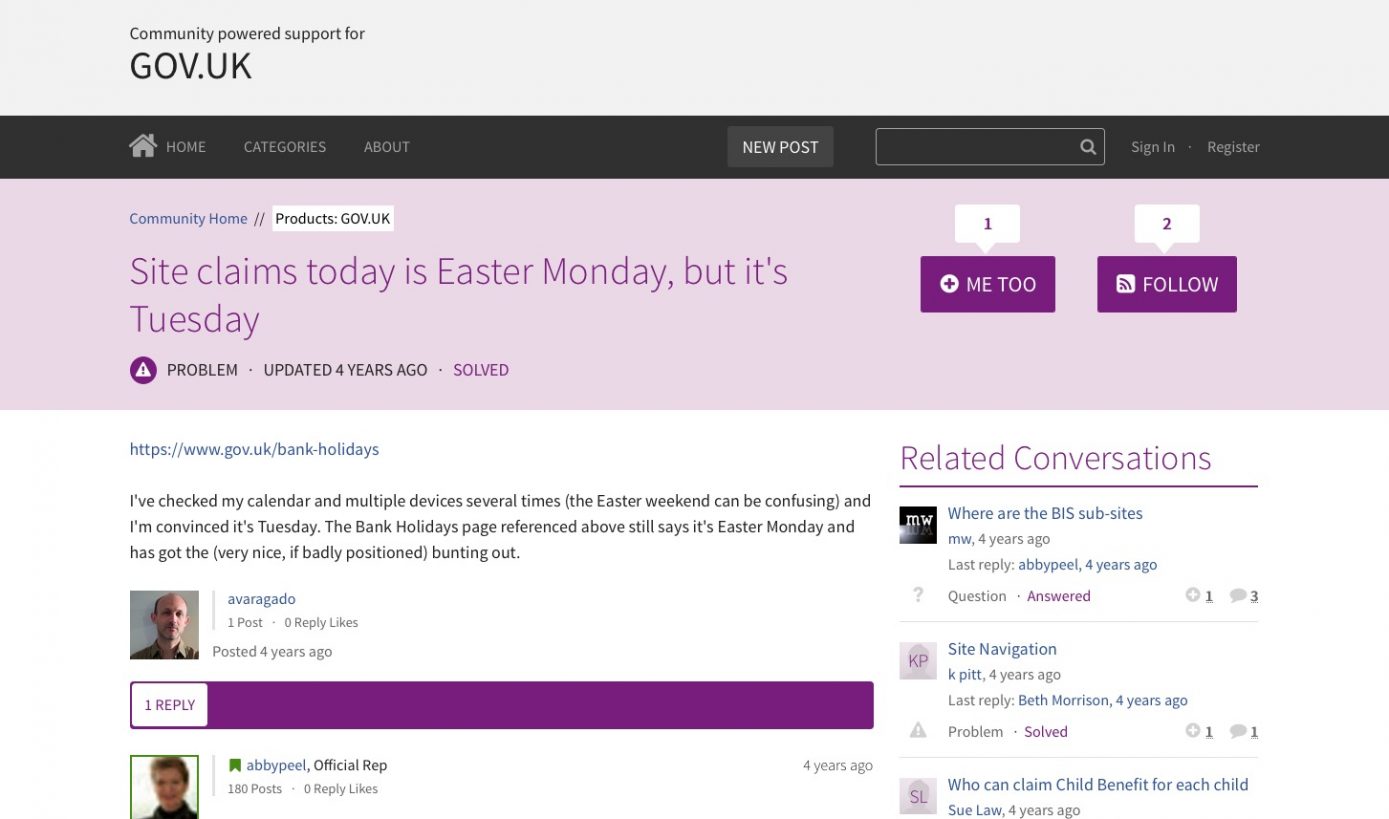
Inevitably, there were problems. The beta users told the team about things they'd spotted, and they got fixed. In this case, the beta said Easter Monday was happening on a Tuesday.
1 February
The first pull request for GOV.UK from a member of the public. Matthew Somerville pointed out an error on the Bank Holidays page (it showed incorrect names for bank holidays in Scotland).
7 February
Developing brand identities for GDS and GOV.UK - this was the first time the name GOV.UK appeared like that, in all caps, which is how it has been referred to ever since:
There’s not a fancy new logo or identity for GOV.UK, partly to save time and money, partly because the URL is what we want people to remember - we want them to know that GOV.UK is the place they need, they don’t have to discover or understand any new names or identities. But, to make the name feel a little more like an actual identity (or as we keep saying in the office ‘a thing’) we’ve decided to always write it in CAPS ... For those who wonder if we’re wasting too much time on things like this, we talked about it for about 10 minutes.
10 February

Mike Bracken, Francis Maude and Liam Maxwell (then working for the IT Reform Group within Cabinet Office) visited contacts in Silicon Valley to drum up support and learn more about the links between the commercial and public sectors.
28 February
Launch of Inside Government, at gov.uk/government
This reflected the way the team was structured and the way it was thinking at the time. Work on GOV.UK was split into two things and two teams, "mainstream" and "inside government".
"Mainstream" pages were citizen-facing, directly addressing user needs.
"Inside government" pages were more similar to the department website pages of old, explaining the work of government to people with more specific interests.
The comments on this blog post tell an interesting story – the day after it was published, someone made a comment about poor accessibility. Hours after that, the team had made changes to improve it.
Neil Williams wrote another blog post, including a short "guided tour" of Inside Government.
One of the images in that post made the point that the new single domain presented all government departments in the same way.
15 March

Ben Terrett:
Someone had put some persona posters up and I got angry, saying that the whole country were our users, not some neat persona. I ripped a hole in that piece of paper and stuck it in the window.
23 March
Mike Bracken wrote a blog post responding to the 2012 budget. He highlighted these commitments from the Treasury:
...from 2014 new online services will only go live if the responsible minister can demonstrate that they themselves can use the service successfully. The Government will also ensure that all information is published on a single ‘GOV.UK’ domain name by the end of 2012 and will move to a ‘digital by default’ approach to its transactional services by 2015.
28 March
First meeting of the Digital Leaders, a group of people from many different government departments working together and sharing knowledge and experience.
Digital Leader Rachel Neaman wrote:
Digital within departments can be a lonely place. It’s often seen as the preserve of geeks or trendy young things and a cross-Government professional network with a mandate for real change is long overdue. It’s comforting to know that others are dealing with the knotty problems, and what also came across clearly today was there’s no quick fix.
3 April
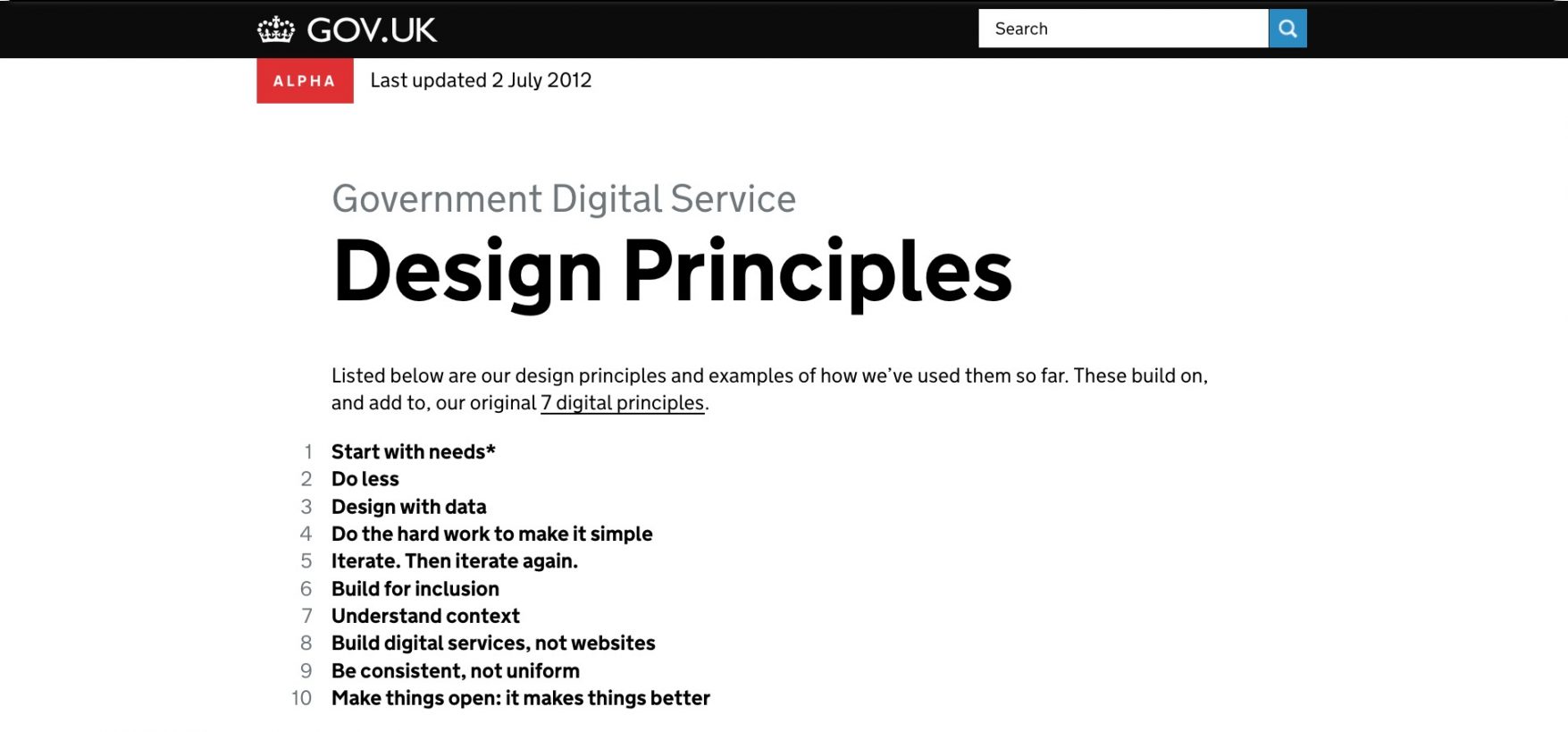
Publication of the Design Principles alpha. Tom Loosemore once said of them:
They're useful because they give every single member of the team a frame of reference within which they can make their own decisions.
I believe guidelines are more likely to be followed if they are simple, clear, helpful and easy to share. That's why this document is one simple HTML page and each principle has its own URL. Too many design guidelines are issued as huge PDFs that go unread.
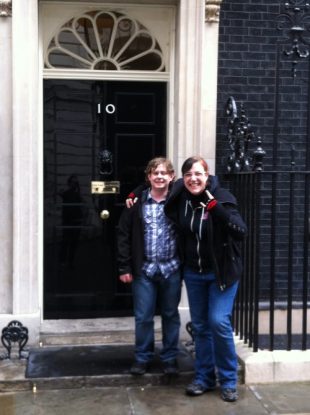
Meanwhile, some of the GOV.UK developers (including Dafydd Vaughan and Mazz Mosely) visited Number 10 Downing Street to help diagnose some technical problems there.
30 April
An infamous incident: to the horror of many colleagues, Pete Herlihy deleted the Inside Government team's icebox (a list of tasks that the team knows need to be done, but that haven't yet been prioritised for action yet).
Shortly after, he wrote:
If it's important, you'll remember it… At one point, our icebox topped fifty stories so I decided to delete the whole thing. It had become a liability to the backlog and had to go. The mantra we had in the team was ‘if it’s important you will remember it’. Living by this mantra was actually quite liberating!
14 May
End of the beta phase for Inside Government. Ross Ferguson blogged about the feedback that came in (both good and bad).
25 May
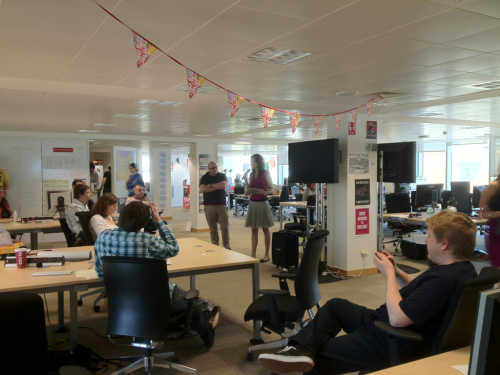
30 May
The first blog post from the new Assisted Digital team, working to help people with limited digital skills to use the new digital services created by government.
Rebecca Kemp explained what assisted digital means:
Assisted digital might be different for different users and services. It could be helping people learn to use the internet so they can use digital services by themselves. It could be having a place where people can go to get help using a digital service. For people who need it, assisted digital could be providing services by phone or face to face.
26 June
Alpha release of the Digital Performance Framework, an essential part of building what would later become the Performance Platform.
On the same day, Chris Heathcote published a blog post about the speed of development, highlighting how the user-centered iterative approach can make small changes quick and easy.
What followed is a swift version of the formal development process: I made a prototype, that was shared amongst the team for feedback, there was general consensus that it was better, a few tweaks of the code, a content editor reviewed the change, the change was coded in the calendars app, pushed to our preview server, reviewed again, and finally made live - all within a day.
2 July
The alpha release of the GOV.UK editorial style guide. Sarah Richards wrote:
The style is about writing clearly, concisely and without jargon. Everyone can benefit from simplicity. Some people have previously seen this as ‘dumbing down’ but being open and accessible to everyone isn’t ‘dumb’ - it’s our responsibility.
3 July
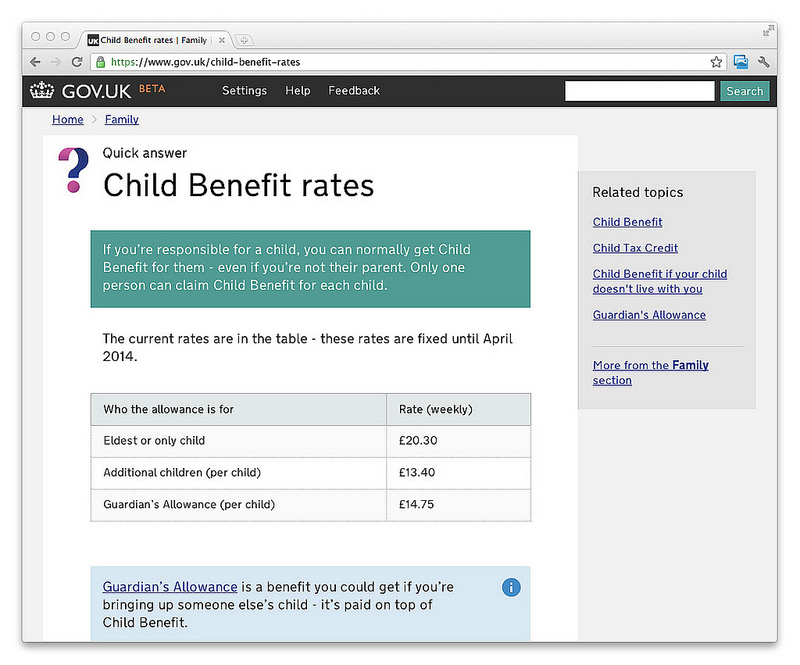
Following another release, the design team wrote about changes to typography on GOV.UK.
11 July
The @govuk Twitter account was joined by @gdsteam, representing the whole organisation, which was rapidly expanding to work on other projects alongside GOV.UK. Louise Kidney wrote:
We have grown and changed and because of our higher profile we are now receiving service delivery queries from citizens which are not within the current remit of @govuk to answer. As a result, we will be changing the name of our Twitter account form @govuk to @gdsteam. The rename on the surface is a minor thing but it indicates a shift back to the accounts roots.
Here's a timelapse video of the dev team releasing updates to GOV.UK.
18 July

After a bit of feedback and user research, the carousel on the front page of the GOV.UK beta was removed and replaced with a simpler, text-based list:
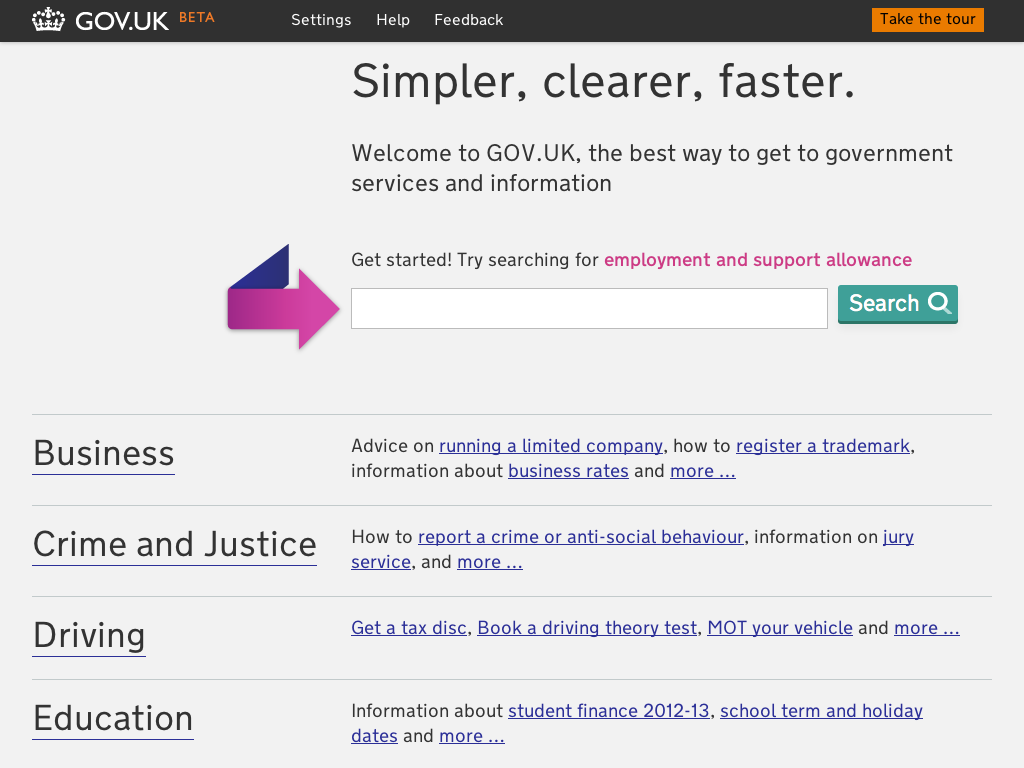
10 August
GDS released an improved version of the Trade Tariff, an important part of the then-Business Link website. This was a more important achievement than it appeared: a small team from GDS, working with a micro-SME private sector supplier, built the new tool at a fraction of the cost of previous unsuccessful attempts.
24 August
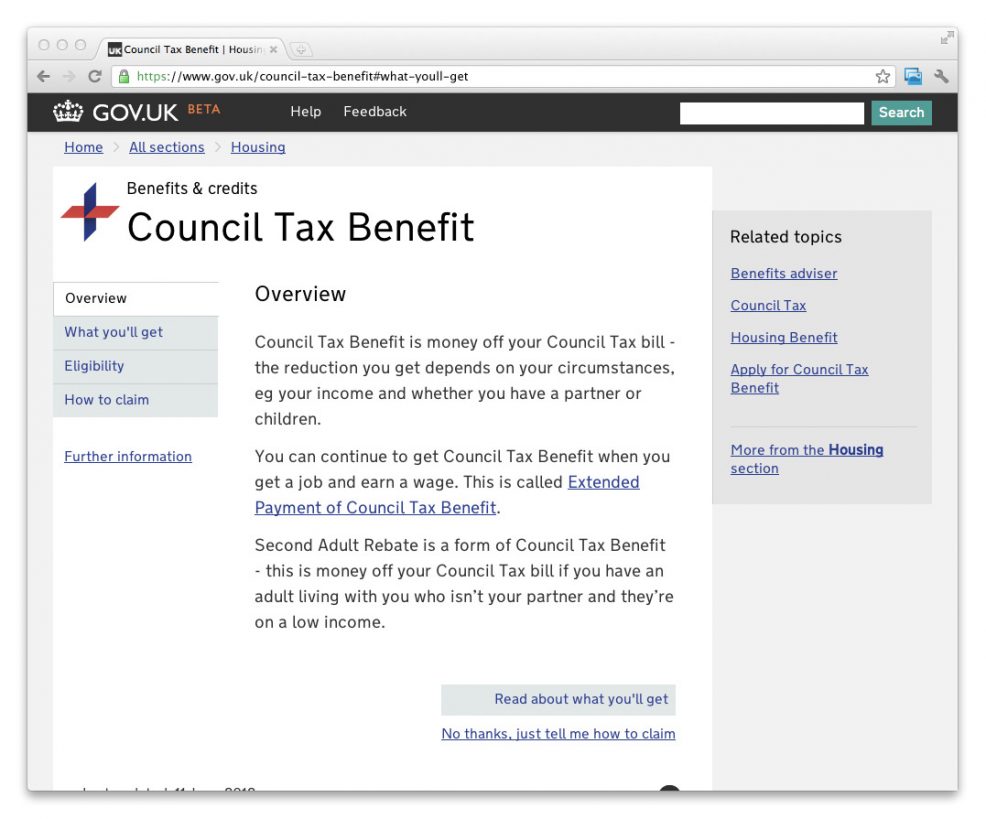
More iteration. Sarah Prag explained in a blog post.
2 October

"A bold new version of the home page". This release was intended to fix problems with browsing and navigating the site.
We explained more in a follow-up post the next day.
4 October
The then "Identity Assurance Programme" (later to become GOV.UK Verify) got some coverage in the national press. Steve Wreyford blogged about the 3 principles underpinning the IDP team's work.
9 October
As the deadline for replacing Directgov got closer, Etienne Pollard summed up the work done so far, with respect to putting user needs first. He included the vital "It's in if…" list of criteria for what was included in GOV.UK's scope, and what wasn't.
10 October
Content designer Padma Gillen on writing for citizens versus writing for customers:
Engaging with the government is something you do because you have to. It’s a necessary part of being a citizen. You want to get it done as quickly and easily as possible, then get on with your life. Because there’s no profit motive, we don’t want to alter that behaviour.
11 October

Paul Downey explained how the team made sure that "no link got left behind" in the move from Directgov to GOV.UK.
16 October
Having worked on it since 2005, Graham Francis posted a thoughtful look back at Directgov's history.
Then-Minister for Cabinet Office Francis Maude wrote an introduction to GOV.UK, and the dev team posted a colophon of software used to build GOV.UK.
Etienne Pollard explained that "we didn't just copy everything over" from Business Link.
This is the code change that removed all the “beta” labels from GOV.UK.
17 October

The big day. GOV.UK went from beta to live, officially replacing Directgov and Business Link.
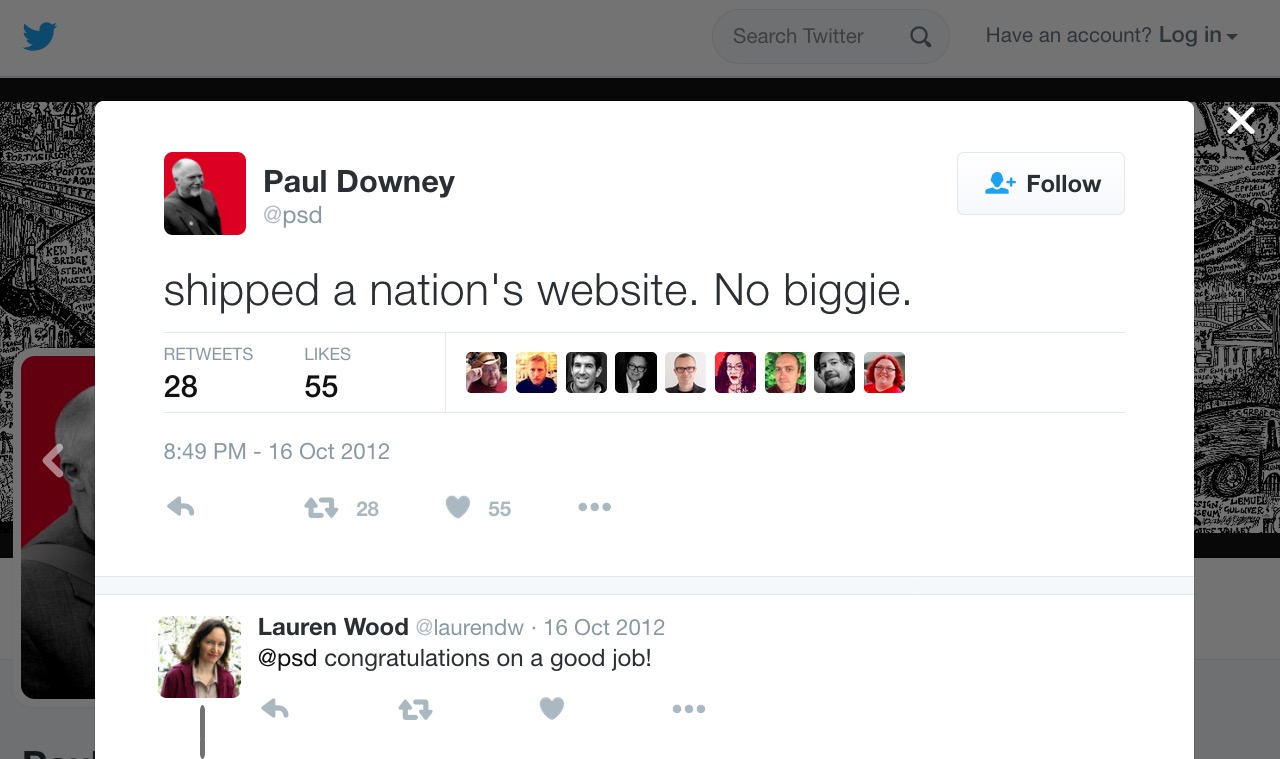
Developer Paul Downey tweeted: “Shipped a nation’s website. No biggie.” Mike Bracken wrote about "why GOV.UK matters". We made a film: “GOV.UK in less than a minute.”
We had cake. Something of a GDS tradition.
18 October

Sarah Prag wrote up the first day figures: 1,129,578 visits from 909,706 unique users.
23 October
Beta release for the Performance Platform.
26 October
Developer James Weiner left GDS, and wrote up a potted story-so-far blog post before he went:
I think I have probably learnt more at GDS than anywhere else I’ve worked, and that comes down to the willingness of everyone to guide and teach everyone else. It’s also why such good work gets done – people respect one another’s opinions and experience, and so give and take criticism constructively; keeping in mind the primary aim of building useful services, rather than carrying out their personal whims.
On the same day, we posted what the team had learned about scaling agile:
We should have committed to doing less like the books, blog posts and experts say.
2 November
Developer Gareth Rushgrove on reducing risk through regular releases:
By releasing smaller chunks regularly it's much easier to see what is going to change, and if something goes wrong it’s much simpler to roll that change back and undo it.
6 November
Publication of the Government Digital Strategy and the Digital Efficiency Report.
The strategy included a list of "actions which we have tried to ensure are meaningful and measurable":
- Departmental and transactional agency boards will include an active digital leader
- Services handling over 100,000 transactions each year will be redesigned, operated and improved by a skilled, experienced and empowered service manager
- All departments will ensure that they have appropriate digital capability in-house, including specialist skills
- Cabinet Office will support improved digital capability across departments
- All departments will redesign services handling over 100,000 transactions each year
- From April 2014, all new or redesigned transactional services will meet the Digital by Default Service Standard
- Corporate publishing activities of all 24 central government departments will move onto GOV.UK by March 2013, with agency and arm’s length bodies’ online publishing to follow by July 2014
- Departments will raise awareness of their digital services so that more people know about them and use them
- There will be a cross-government approach to assisted digital. This means that people who have rarely or never been online will be able to access services offline, and we will provide additional ways for them to use the digital services
- Cabinet Office will offer leaner and more lightweight tendering processes, as close to the best practice in industry as our regulatory requirements allow
- Cabinet Office will lead in the definition and delivery of a new suite of common technology platforms which will underpin the new generation of digital services
- Cabinet Office will continue to work with departments to remove legislative barriers which unnecessarily prevent the development of straightforward and convenient digital services
- Departments will supply a consistent set of management information (as defined by Cabinet Office) for their transactional services
- Policy teams will use digital tools and techniques to engage with and consult the public
- Collaborate with partners across public, private and voluntary sectors to help people go online
- Help third party organisations create new services and better information access for their own users by opening up government data and transactions
These actions defined the scope of GDS work for the years ahead. The Digital Efficiency Report provided much of the evidence on which the list of actions was based.
Next day, Sir Bob Kerslake, then-head of the Civil Service, wrote:
Digitisation of government has a wide range of benefits from driving savings and innovation for government to making things easier and more convenient for citizens. I am keen to embrace the concept of Digital by Default not just because it’s the right thing to do to meet the needs of our users, but because it offers completely new ways of working for civil servants.
7 November
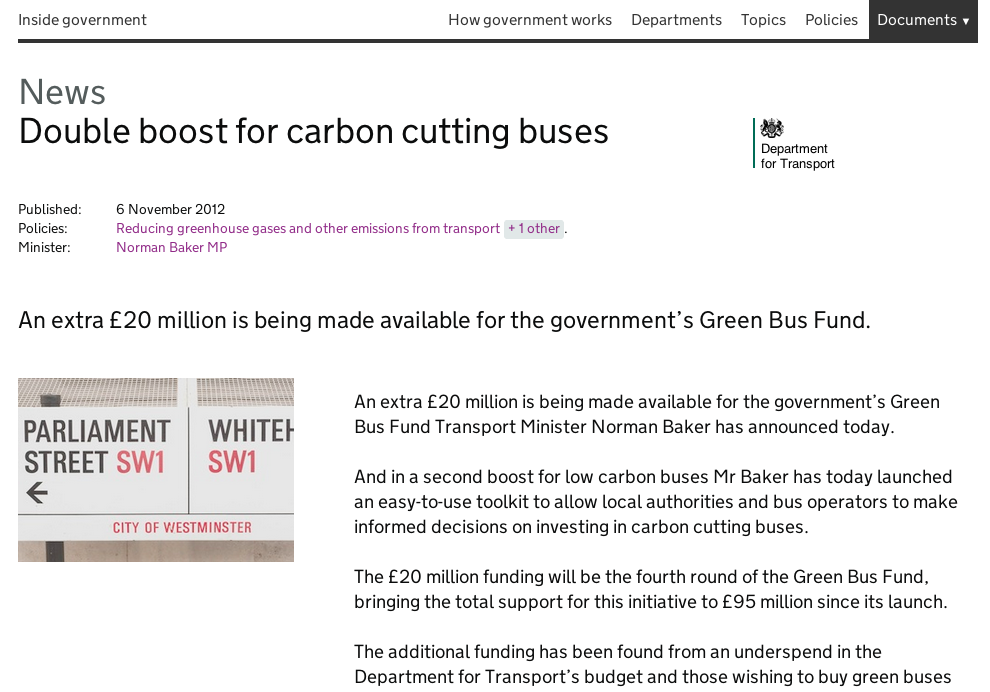
13 November
First visit to GDS by US colleagues Tim O'Reilly and Jennifer Pahlka.
15 November
This was the start of a long phase of transition, moving hundreds of old government websites run by departments over to GOV.UK.
26 November
The Digital Leaders Network was formally announced. This group of advisors (from inside and outside government) was vital in setting up and running a new form of governance across the system. They later agreed the GOV.UK strategy, and drove through the development of separate departmental digital strategies. Kathy Settle played a key role in establishing the Network and guiding its work.
10 December
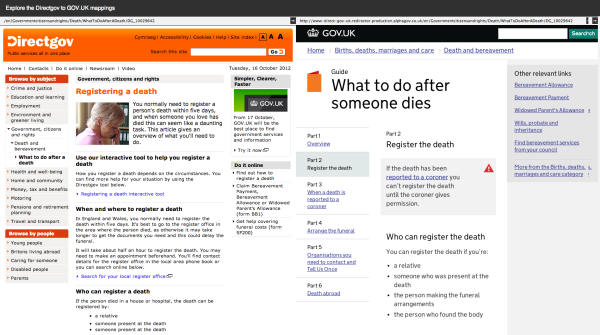
Technical architect Anna Shipman wrote about the Migratorator, a software tool developed inside GDS to help moving websites from one domain to another.
10 December
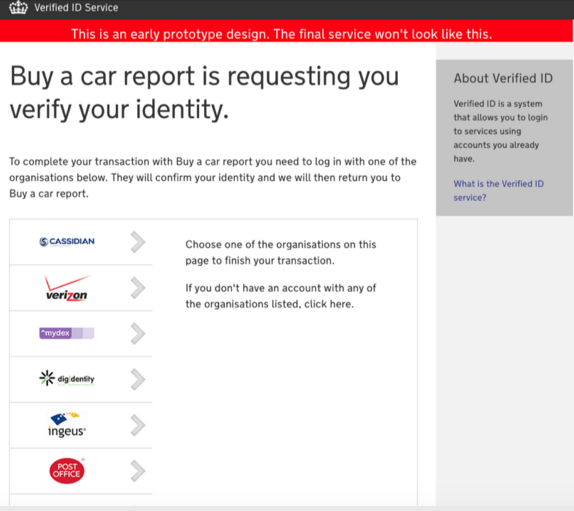
13 December
A short film about the transformation team, which at this stage was very small. It would soon expand to include 25 exemplar projects, and become a major new focus of work for GDS between 2013 and 2015, announced at Sprint 13 in January 2013.
14 December
GDS announced that Liam Maxwell would be joining GDS as government Chief Technology Officer. With him came the IT Reform Group, formerly part of Cabinet Office.
21 December
The Government Approach to Assisted Digital was published.
On the same day, 18 government departments published their digital strategies. Tom Loosemore wrote:
For the first time, Government now has a collective ambition level which befits the expectations of our users in a digital age.

